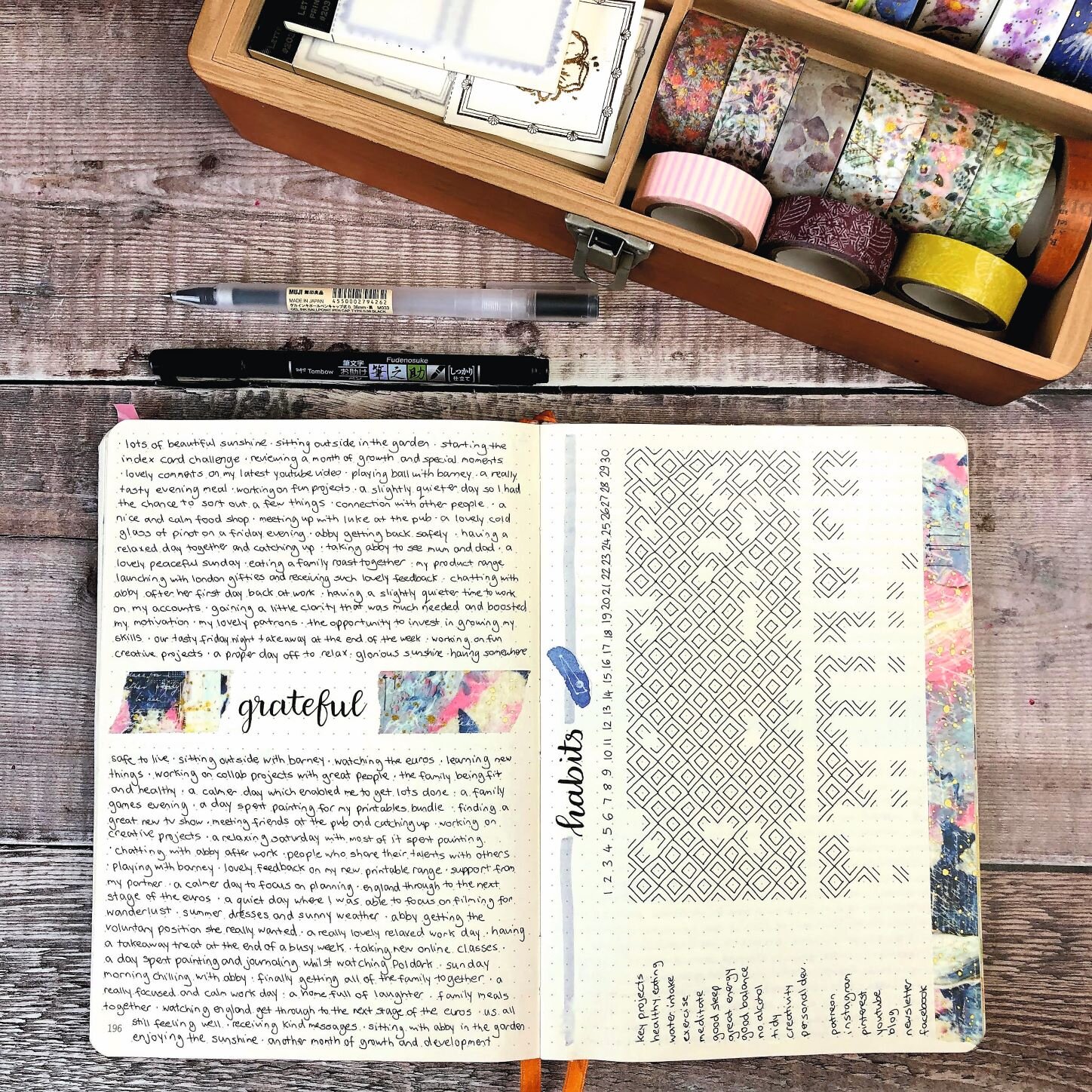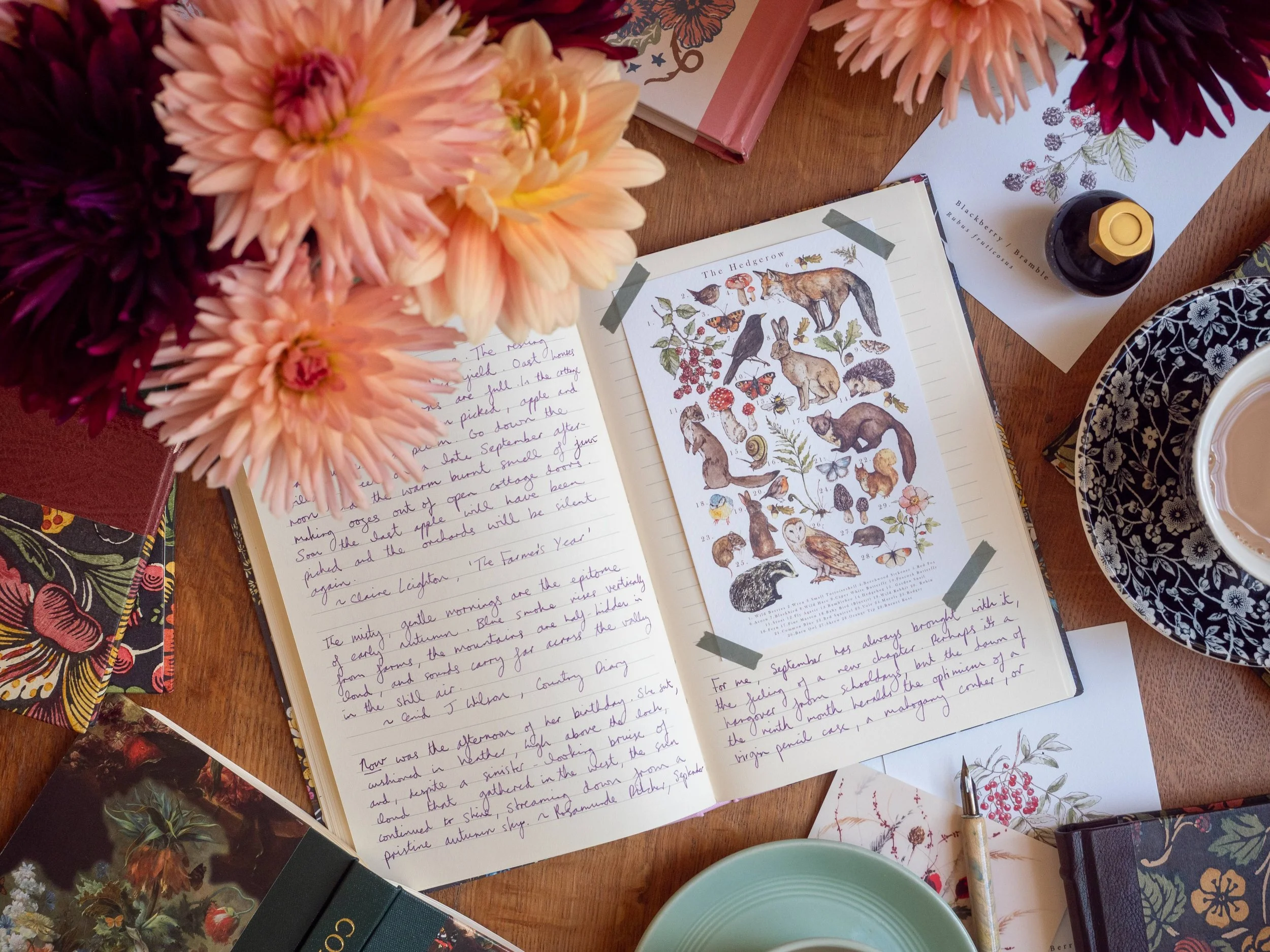Becaue the pen is not only mightier than the sword but also a much more useful organisational tool
In our October issue, our wellbeing feature was all about journalling, from gratitude journals, to nature journals to rage journals (yes, really!). By and large, you can make a journal what you want, but if you fancy venturing into the world of bullet journalling, you will need a bit of basic knowledge to get you started. Here’s all you need to know…
Bullet journaling is really an organisation system, but you can make it as creative or relaxing as you wish, too, and bullet journals can also be beautiful. There are countless Pinterest boards full of beautiful bullet journals to inspire you. Before you get carried away with brush pen calligraphy and journal stickers, however, you need to set up a basic journal.
Set up a bullet journal
1. Choose your journal. Purists will go for ‘dotted’ paper but plain, lined or squared is all fine.
2. Turn to your first blank spread and create your Index (just write ‘INDEX’ at the top for now - in fancy writing if you wish). As you go, you add pages to your index here, so you can always find the page you’re looking for.
3. On the next blank spread, create a Future Log. This is a forward planning space for the next six months. Divide each page into three with ruled lines and write the names of the next six months in each box. Number the pages 1 and 2 at the bottom and record them in your Index.
4. On the next single page, make a Monthly Log for this month. Write the numbers of the dates down the left hand side and next to them note the initial letters of the days of the week to help you find the right day. This is for big events such as birthdays etc. On the opposite page make a Monthly Tasks Page where you can make a note of any events, chores to be done etc in this month. Label these pages 2 and 3 and note them in your Index.
5. Turn the page and repeat this process for a Weekly Log and Weekly Tasks Page. Label these pages 4 and 5 and note them in your Index.
6. Do the same for a Daily Log and Daily Tasks Page for today. Label these 6 and 7 and note in your Index.
7. Make a big cup of tea and sit down and label the remainder of the pages in your journal.
8. Turn to the back of the journal and create some Collections Pages, working backwards, and adding each to your Index as you go. Collections pages can be anything; lists of books or films you want to see, recipes to try, places to go… Record each new page in your Index.
9. You can also start to add more pages to the front as you go. You might want a Habit Tracker for each month to record something like taking a daily walk, reading a chapter of a book or remembering to drink 8 glasses of water each day. Or you might want a Gratitude Page each week or month, or a page for tracking money spent. It’s up to you.
10. As you get going you can add to your Log pages with goals for that week or month, and other lists - maybe plans for your lunches, shopping lists and the like.
Now you’ve got plenty of pages set up, here’s a brief guide to bullet journalling symbols so you can get started.
Bullet journalling symbols
. A dot denotes a task. It can be easily turned into another symbol once completed or moved.
x A cross is to show a task is completed.
> This sort of arrow shows you have migrated a task forward to another day or month.
< This sort of arrow shows a task which has been migrated from elsewhere.
o An event is a little circle. You can colour it in when the event is over.
- A dash is for a note, where you just want to record information.
You can add a ‘!’ or a ‘*’ to mark important items in your journal.
? A question mark can be used for items you aren’t sure about or to denote a query you’re waiting for information on.
Obviously you can make up your own signs and symbols to suit you, too. You should have all the basics you need now. You can find lots more ideas and inspiration on the Bullet Journal website. But mainly, just enjoy adding to your journal in whatever creative or organisational way works best for you.
Read all about the many different types of journaling and how they can improve your wellbeing from page 54 in our October issue.
Buy this month's The Simple Things - buy, download or subscribe





